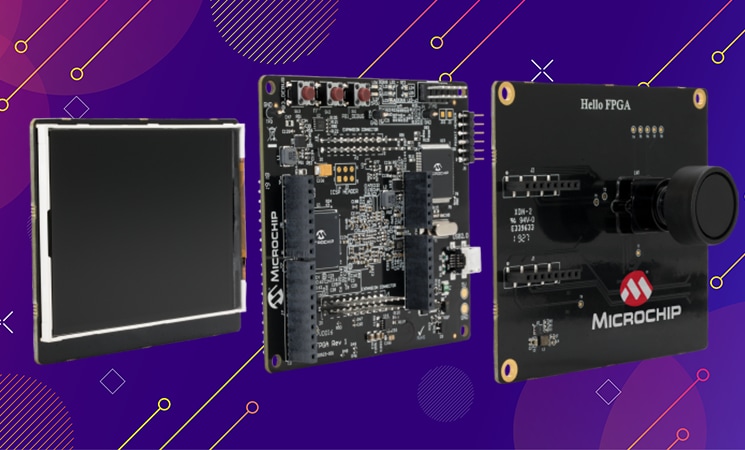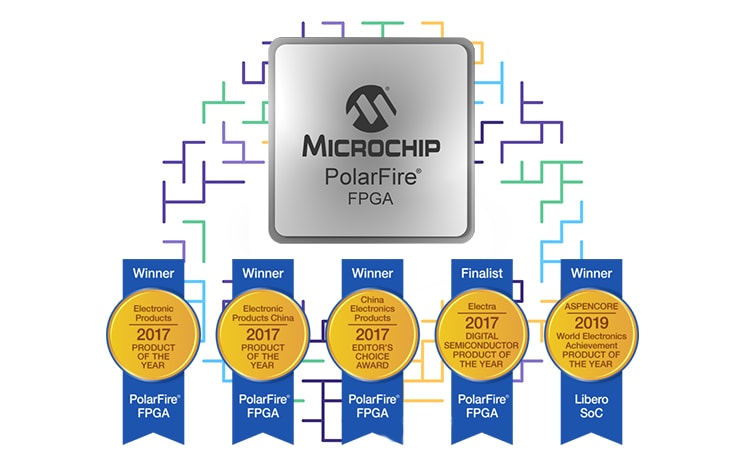FPGAs — A Deep Dive
FPGAs have surfaced as the platforms of choice for many new-age applications owing to their lower latency, configurability and power efficiency.
The world’s processing and bandwidth requirement is an ever-burgeoning number driven by rapid advancements in technology and infrastructure. This growth demands increased design customizability, data and design security, and restricted power and footprint budgets. FPGAs are increasingly playing a pivotal role in delivering these capabilities. They offer an option to build a custom programmable holistic solution with a reduced cost of ownership using a single device while providing extended functionality with supplementary features.
Examples of key adopters of FPGAs are high-speed optical networks with embedded applications at the edge such as surveillance, medical imaging, and industrial vision, and Unmanned Aerial Vehicle (UAV) monitoring.
Overview
This article traces the progression of the FPGA in the semiconductor industry and its continued evolution to become a favored option for many modern-day applications. It discusses the types of FPGA architecture, the diversity in functionality and then outlines the available options in the market to empower you to use an FPGA for your upcoming design.
FPGA’s Beginnings
The FPGA was developed in 1985, in response to designers that wished to devise their complex circuits without the investment demands of a full-custom design. The FPGA industry evolved from its predecessors - Programmable Logic Devices (PLD) and the Programmable Read-Only Memory (PROM) by offering flexibility in programming and the ability to add/modify features even after deployment.
By the mid-1990s, FPGAs had disrupted and transformed the semiconductor industry. While networking and telecommunications were the biggest beneficiaries at the time, FPGAs have since gained popularity across diverse application markets owing to their unique set of advantages including low risk of product obsolescence, rapid prototyping, and easy debugging. FPGAs are now a household name in the telecom, consumer electronics, automotive and industrial markets as well as the more classical areas of military, aerospace and defense.
Progression and Advancements
A Complex Programmable Logic Device (CPLD) is typically an EEPROM-based programmable logic device with a simple architecture and a small gate count. It is ideal for simple designs that do not demand flexibility and extensive computational ability. It offers the advantage of operating at power up owing to its EEPROM-based structure. However, design modifications on CPLDs can be tedious. An FPGA is a reconfigurable integrated circuit (IC) used to implement complex logic functions supporting multiple system implementations and revisions. It can implement anything as simple as a gate or as complex as a multicore processing system. Most FPGAs in the market are made from volatile RAM which means that additional memory is required to commence operation after power up.
Microchip’s FPGAs are unique in that they are made from a non-volatile flash-based memory. This instant-on technology enables them to deliver 30 to 50 percent lower power than competing FPGAs. They also offer immunity to radiation and unique security features which include prevention of overbuilding and cloning, full design IP protection, root of trust, secure data communications and anti-tamper capabilities.
A popular topic of debate with many a deliberation has been how to choose between an FPGA and a processor. The answer boils down to your application requirement and your tradeoff limitations. While processors are relatively easy to use and program, they mostly offer sequential programming and have speed constraints. FPGAs, on the other hand, can be perceived as complex devices but offer high-speed parallel computation environments which are a growing necessity in modern-day applications. Of course, we now have the means to combine a processor core with an FPGA to optimize performance and speed for current application designs like edge computing, smart vision and Internet of Things (IoT).
Microchip’s PolarFire® System on Chip (SoC) FPGA is one such device which is the first SoC FPGA with a deterministic, coherent RISC-V CPU cluster and a deterministic L2 memory subsystem enabling Linux and real-time applications. PolarFire SoC FPGA is ideally suited for secure, power-efficient computing in a wide range of applications within imaging, Artificial Intelligence/Machine Learning (AI/ML), IoT, industrial automation, automotive, aerospace and defense, wireline access networks and cellular infrastructure.
FPGAs are often perceived to be complicated devices and impossible for people without prior FPGA development experience. In contrast to this perception, getting started with FPGAs has never have been easier. An extensive range of content and materials are available in the market targeting FPGA beginners. Most of these are offered by leading FPGA manufacturers, FPGA distribution houses and other third parties. Online academic platforms also offer professional design courses around FPGAs. Furthermore, for professional embedded designers without FPGA experience looking to work on FPGAs, Microchip has introduced the Hello FPGA Kit to be a low-cost, compact, versatile hardware that serves as an easy tool to familiarize oneself with FPGAs. Hello FPGA can be used to develop applications from simple control logic to data acquisition, image processing, signal processing and AI applications.
Today, FPGAs come in different shapes and sizes catering to a broad spectrum of applications but at a fundamental level you must choose between SRAM-based and Flash-based FPGAs. The option is once again dependent on the specific needs of the application design and acceptable compromises. Flash-based FPGAs do afford additional benefits of low power, immunity to radiation and inherent security features making them an ideal choice for a wider range of applications including those with stringent requirements like in aerospace and defense.
Nearly every electronic device today is exposed to security threats. It is not enough for today's demanding applications to meet the functional requirements of their design—they must do so in a secure way. Security starts during silicon manufacturing and continues through system deployment and operations. The same goes for FPGAs. Specifically, SRAM-based FPGAs lack the key capabilities required to create a trusted and secure hardware platform for a secure embedded system making them vulnerable to cloning, copying, and reverse engineering. Sensitive customer data can be exposed and embedded systems compromised. Microchip treats security with utmost importance and offers a layered approach to protect Intellectual Property (IP) by ensuring hardware security, design security and data security.
Applications in most markets are constantly evolving and imposing strict restrictions on power and latency while requiring high compute capabilities. The constraints presented by these evolving demands lead to more opportunities for specialized computing hardware. FPGAs have surfaced as the platforms of choice for many such applications owing to their lower latency, configurability and power efficiency.
Conclusion
Microchip offers an extensive portfolio of low and mid-range density FPGAs that lead the industry in their low power consumption, reliability and security capabilities. Designing with Microchip FPGAs, SoC FPGAs and radiation tolerant FPGAs allow you to meet high-bandwidth connectivity and high-data throughput your applications needs. Whether you are designing hybrid and electric vehicles, communications systems, IoT infrastructure, industrial controls, industrial automation, spacecraft, commercial aircraft or and defense equipment, Microchip has what you need. Visit Microchip FPGAs for more information or contact Microchip’s FPGA marketing team at FPGA_marketing@microchip.com.
Curious about FPGA applications? See how makers are leveraging FPGAs for innovative projects at Microchip Makes.

